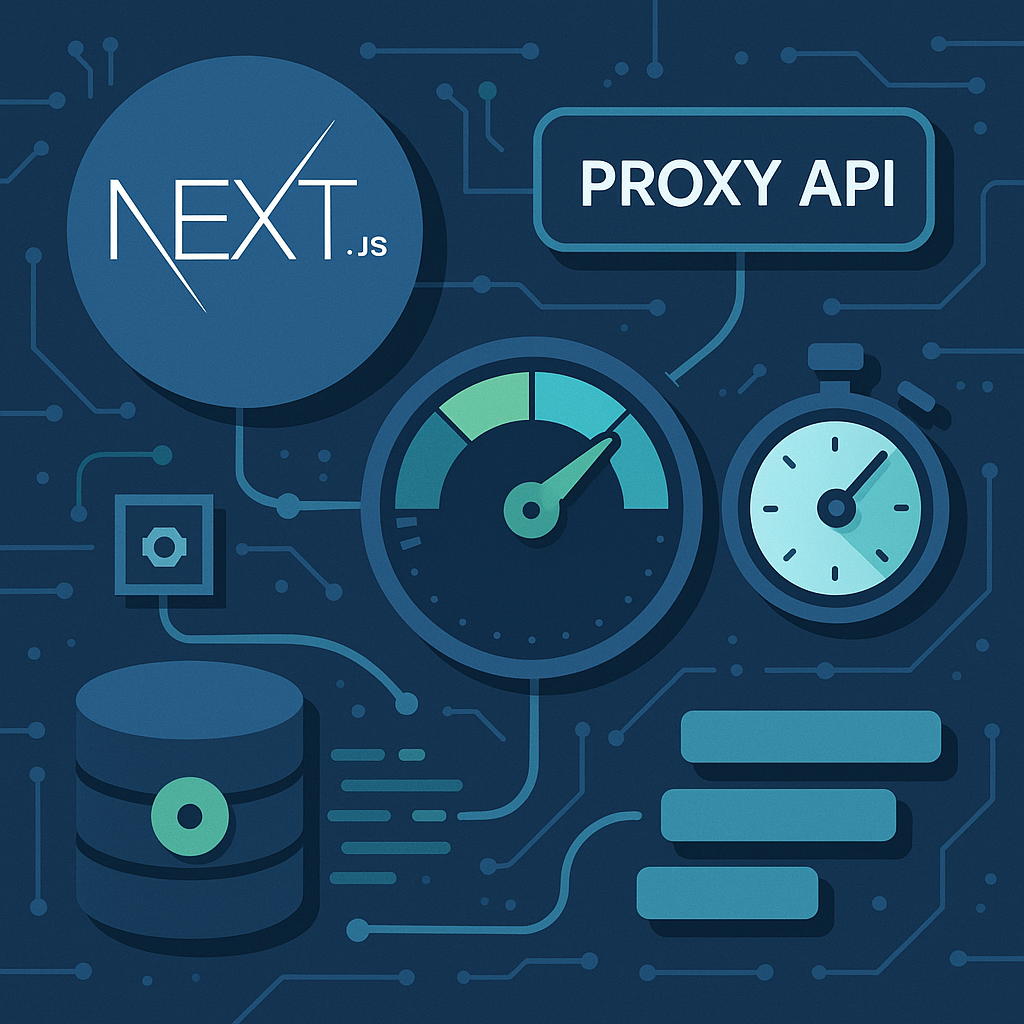
Modern web applications frequently require integration with external APIs and services, making proxy implementations a critical component of application architecture. Next.js provides several powerful approaches for creating proxy APIs, but optimizing their network response performance can significantly impact user experience and application scalability[1][2]. This comprehensive guide explores proven strategies and best practices for maximizing the performance of Next.js proxy APIs.
Understanding Next.js Proxy Architecture
Next.js offers multiple methods for implementing proxy functionality, each with distinct performance characteristics. The most common approaches include using Next.js rewrites, API routes with HTTP proxy middleware, and custom middleware implementations[1][3]. Understanding these options is crucial for selecting the right approach based on your specific performance requirements.
Rewrites vs HTTP Proxy Middleware
Next.js rewrites provide a convenient, built-in proxy solution that operates at the framework level[4][5]. They're particularly efficient because Next.js handles the routing internally without requiring additional server logic. In contrast, HTTP proxy middleware offers more fine-grained control but introduces additional processing overhead[6][7].
// next.config.js - Using rewrites
module.exports = {
async rewrites() {
return [
{
source: '/api/:path*',
destination: `${process.env.API_URL}/:path*`,
},
]
},
}
Essential Performance Optimization Strategies
1. Implement Intelligent Caching
Caching represents one of the most impactful optimization techniques for proxy APIs[8][9]. Next.js automatically provides caching mechanisms, but strategic implementation can dramatically improve response times.
Server-Side Caching Configuration
// app/api/proxy/route.js
export async function GET() {
const response = await fetch('https://external-api.com/data', {
next: { revalidate: 60 } // Cache for 60 seconds
});
return Response.json(await response.json());
}
// Force dynamic behavior when needed
export const dynamic = 'force-dynamic';
Advanced Caching Strategies
For applications with heavy API usage, implementing Redis or in-memory caching can reduce external API calls by up to 80%[10]. Consider implementing cache invalidation strategies based on data freshness requirements and user context.
2. Optimize Connection Management
Connection pooling and keep-alive mechanisms significantly improve proxy performance by reducing connection overhead[11][12]. When using custom HTTP clients, ensure proper connection management:
// lib/httpClient.js
import { Agent } from 'https';
const httpsAgent = new Agent({
keepAlive: true,
maxSockets: 50,
timeout: 30000,
});
export const optimizedFetch = (url, options) => {
return fetch(url, {
...options,
agent: httpsAgent,
});
};
3. Enable Response Compression
Next.js includes gzip compression by default, but ensuring proper configuration can reduce response sizes by 60-80%[13][14]. Verify compression is working effectively:
// next.config.js
module.exports = {
compress: true, // Enabled by default
experimental: {
serverComponentsExternalPackages: ['sharp'], // Optimize image processing
},
}
4. Implement Request Batching
Combining multiple API calls into single requests reduces network overhead and improves performance[2]. This is particularly effective for applications making numerous small API requests:
// app/api/batch/route.js
export async function POST(request) {
const { requests } = await request.json();
const batchedResults = await Promise.all(
requests.map(req =>
fetch(`${process.env.API_URL}${req.endpoint}`, req.options)
)
);
return Response.json(batchedResults);
}
Advanced Performance Techniques
Streaming Responses
For large datasets or real-time applications, implementing streaming responses can significantly improve perceived performance[15][16]. Next.js supports streaming through the Response API:
// app/api/stream/route.js
export async function GET() {
const stream = new ReadableStream({
async start(controller) {
const encoder = new TextEncoder();
// Stream data as it becomes available
for await (const chunk of dataSource) {
controller.enqueue(encoder.encode(JSON.stringify(chunk)));
}
controller.close();
},
});
return new Response(stream);
}
Edge Runtime Optimization
Deploying proxy APIs to edge locations using Next.js Edge Runtime can reduce latency by 40-60% for geographically distributed users[17][18]. However, consider the runtime limitations when implementing complex proxy logic:
// app/api/edge-proxy/route.js
export const runtime = 'edge';
export async function GET(request) {
const response = await fetch('https://api.example.com/data');
return new Response(response.body, {
headers: response.headers,
});
}
Memory Management
Proper memory management prevents performance degradation under high load[19][20]. Monitor memory usage and implement appropriate limits:
// Implement memory-efficient data processing
const processLargeDataset = async (data) => {
// Process data in chunks to avoid memory spikes
const chunkSize = 1000;
const results = [];
for (let i = 0; i controller.abort(), 10000);
const response = await fetch('https://external-api.com/data', {
signal: controller.signal,
});
clearTimeout(timeoutId);
if (!response.ok) {
throw new Error(`API responded with status: ${response.status}`);
}
return Response.json(await response.json());
} catch (error) {
console.error('Proxy error:', error);
return Response.json(
{ error: 'Service temporarily unavailable' },
{ status: 503 }
);
}
}
Monitoring and Performance Measurement
Implementing comprehensive monitoring enables continuous optimization and early problem detection[23][24]. Track key metrics including:
- Response Time: Monitor 95th percentile response times
- Throughput: Measure requests per second capacity
- Error Rates: Track failed requests and error patterns
- Memory Usage: Monitor for memory leaks and optimization opportunities
// lib/metrics.js
export const trackAPIPerformance = async (apiCall) => {
const startTime = performance.now();
try {
const result = await apiCall();
const duration = performance.now() - startTime;
// Log successful request metrics
console.log(`API call completed in ${duration}ms`);
return result;
} catch (error) {
const duration = performance.now() - startTime;
console.error(`API call failed after ${duration}ms:`, error);
throw error;
}
};
Deployment Considerations
When deploying to serverless platforms like Vercel, consider function timeout limits and cold start implications[25]. Optimize for your deployment environment:
// vercel.json
{
"functions": {
"app/api/heavy-proxy/route.js": {
"maxDuration": 60
}
}
}
For high-traffic applications, consider implementing load balancing strategies[26] and horizontal scaling approaches to distribute proxy load effectively.
Conclusion
Optimizing Next.js proxy API performance requires a multi-faceted approach combining intelligent caching, efficient connection management, proper error handling, and continuous monitoring. By implementing these strategies systematically, applications can achieve significant performance improvements while maintaining reliability and scalability. Regular performance audits and optimization iterations ensure continued optimal performance as application requirements evolve.
The key to successful proxy optimization lies in understanding your specific use case, measuring current performance, and applying targeted optimizations based on actual bottlenecks rather than assumed limitations. With proper implementation of these techniques, Next.js proxy APIs can deliver exceptional performance even under demanding production conditions.
No comments:
Post a Comment